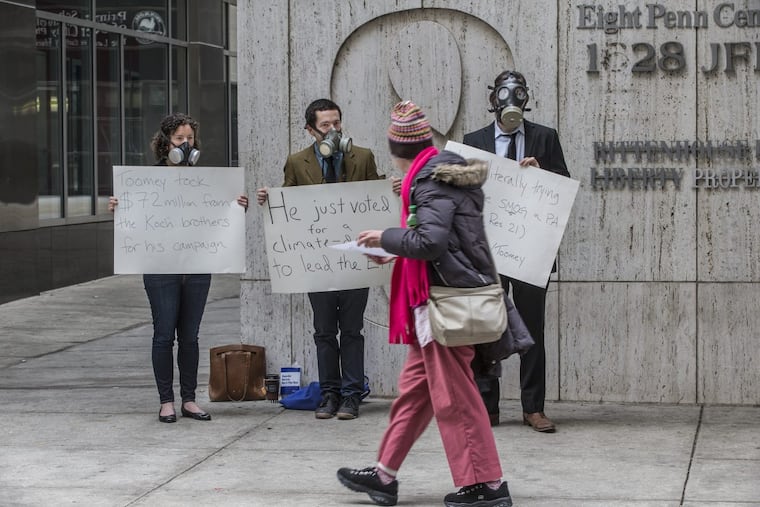Philly fails to meet smog standards, EPA says
The EPA's decision that Philadelphia was in "nonattainment' of that standard under the Clean Air Act is not surprising: Officials and environmental groups have long acknowledged smog is a problem in the area.

The U.S. Environmental Protection Agency ruled Monday that the Philadelphia metro region, which includes a large area stretching to Wilmington and Atlantic City, has failed to meet ground-level ozone standards.
Ground-level ozone, also referred to as smog, is created when nitrogen oxides and volatile organic compounds form a chemical reaction from sunlight. Those chemicals come from cars, trucks, power, and industrial plants.
Children, people with respiratory problems such as asthma, and adults who exercise outdoors are most vulnerable to smog. In children, repeated ozone impact on developing lungs can lead to reduced lung function as adults. It can also aggravate asthma.
In 2015, the EPA proposed new air-quality standards limiting smog levels to 70 parts per billion, down from 75 parts per billion. Those rules are slated to go into effect this fall, but that has been delayed by the EPA once already.
The EPA's recent decision that Philadelphia was in "nonattainment" of that standard under the Clean Air Act is not surprising since smog has long been an issue for the region. Local groups have rallied in recent months, citing the problem.
The EPA is now classifying the city as "marginal" — meaning it is close to being in compliance.
Since January 2017, the EPA, under Administrator Scott Pruitt, had refused to say whether the city — and a host of others — met the benchmark. Being out of compliance, or in "nonattainment," has an impact on the state, city, businesses, and even motorists through increased regulation and funding.
The EPA was supposed to state whether Philadelphia was in compliance by last Oct. 1 but failed to do so. Earlier this year, a federal court ruled that the EPA broke the law by missing the deadline, and gave the EPA until April to issue its ruling. The EPA released its ruling April 30.
Other areas of the U.S. are also out of compliance, including all of New Jersey, New York City, and swaths of California.
Though the city has not met the standards, a recent report by the U.S. Chamber of Commerce's Global Energy Institute noted that, nevertheless, ozone levels have been on the decline in the region since peaking in 2002. It cites cooperation among the "EPA, states, industry, and environmental advocates working together" for the decline.
Coincidentally, after the EPA revealed the list of cities out of compliance, the Pennsylvania Department of Environmental Protection announced Tuesday that it was issuing a code orange ozone alert for Philadelphia because of the warm weather. The DEP warned that young children, the elderly, and people with respiratory problems including asthma, emphysema, and bronchitis should limit outdoor activities.
On the DEP scale, green is good, yellow is moderate, and orange is unhealthy for people at risk. Red signifies the ozone is at an unhealthy level for all.